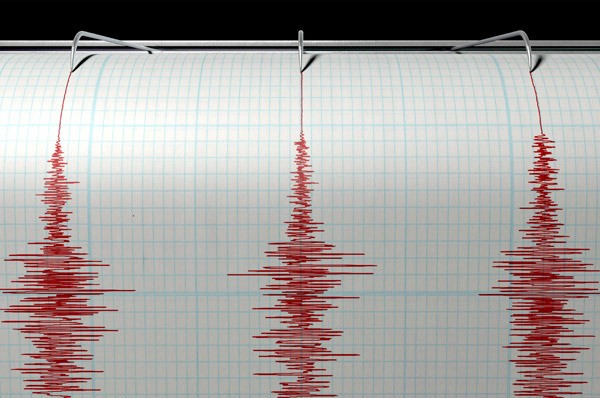Even in the worst earthquake, the ground trembles for a very brief time. It isn’t that the ground shakes for hours or days — all the rumble and tumble is over in a matter of seconds, or in extremely long-duration quakes, in a couple of minutes. Then the dust settles and everything is quiet again. The ground goes back to sleep.
The quake itself is over so fast and the shaking so relatively minor (it isn’t as if we’re seeing mountain ranges thrust up thousands of feet, as in the formative stages of the planet) that if it weren’t for people, the shaking ground would be no big deal. If the temblor struck an unpopulated expanse of prairie, for example, the level of disaster would be zilch.
The real problem is that quakes sometimes strike populated zones and the infrastructure that people depend upon is damaged. Buildings collapse, sanitation and water systems rupture, highways are broken up, electrical and natural gas systems get torn apart, hazardous substances are spilled into the atmosphere and water supply.
In the aftermath of a quake, people become buried beneath rubble, injured by shattered glass and sharp metal, burned in fires, electrocuted. With the failure of the power grid, medical patients die. Transportation comes to a halt, resulting in the disruption of services and shortage of commodities. Communication lines cease to function. Emergency services (ambulance, fire, police, hospitals) are overwhelmed. Vast numbers of people are suddenly thrust out on the street with no place to go for shelter, no place to get food or clean drinking water, no one to protect them or comfort them. Often they have no idea what happened to their loved ones. The physical, emotional and psychological impact on earthquake survivors is enormous.
Even the most brilliant scientists are not yet able to accurately forecast an earthquake. All they can predict is something like, “Sometime in the next 50 years, the BIG ONE will hit.” But they can’t say, “Get outside and move away from buildings now, because in 15 minutes, the BIG ONE is going to hit.” So what good does that do you?
The best you can do is prepare in advance. Formulate a plan of actions to take during a quake and know what to do in the aftermath.
Here are some bullet points about making your home as earthquake-proof as possible:
• Fasten large furniture (hutch, entertainment center, bookshelf unit, grandfather clock, etc.) to the wall.
• Fasten the water heater to the wall by using a metal strap bolted to wall studs.
• Fasten the refrigerator to the wall.
• Position framed pictures and mirrors away from the bed, couch and chairs so they won’t fall on people during a quake.
• Store heavy and breakable items low on shelves and behind closed cabinet doors.
• Secure cabinet doors with positive latching mechanisms.
• In the garage, store toxic substances (weed killer, etc.) on the bottom shelf in a
locked cabinet.
• Know where and how to turn off the natural gas supply to your house.
• Keep sturdy shoes near your bed so you can put them on and get out of a shattered house without injury to your feet.
• Have your evacuation kit easily available and have an evacuation plan.
Sequim resident Rich Johnson is a former Special Forces survival expert and author of several books, including “The Ultimate Survival Manual,” and “Rich Johnson’s Guide To Wilderness Survival.” These and other books of his are available at Amazon. Reach him via email at rhj@olypen.com.



